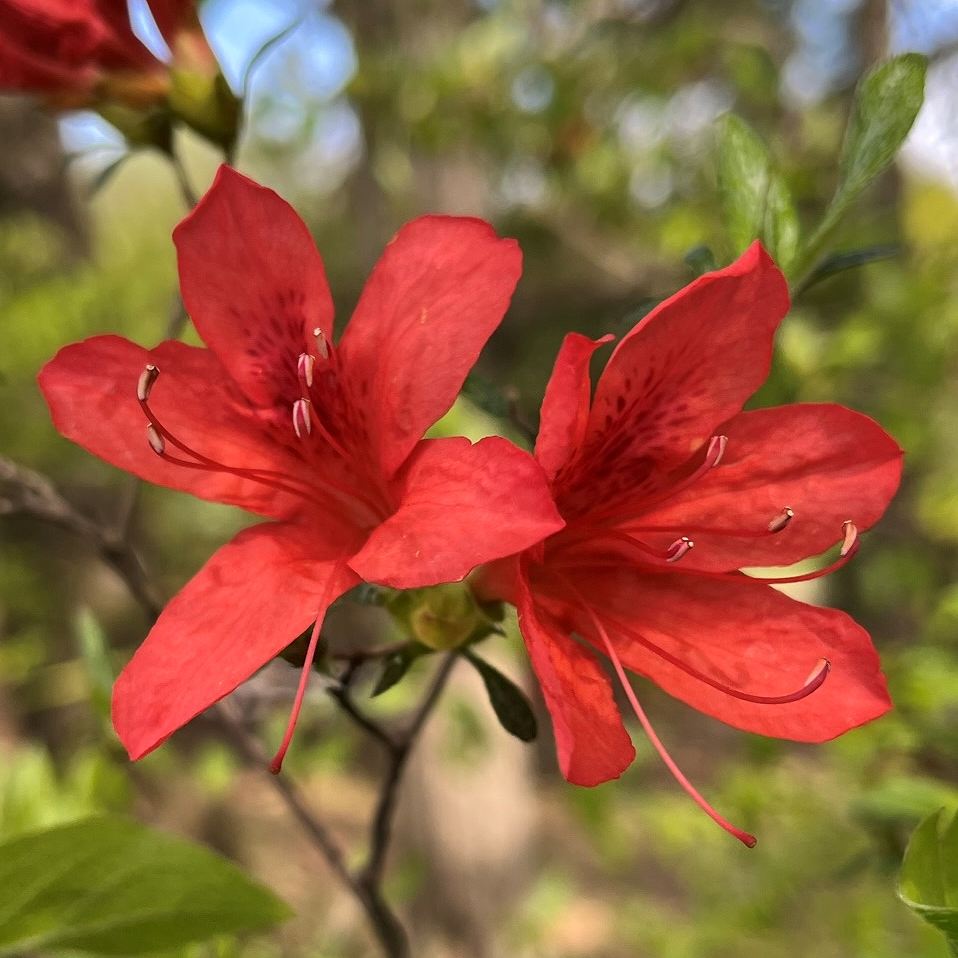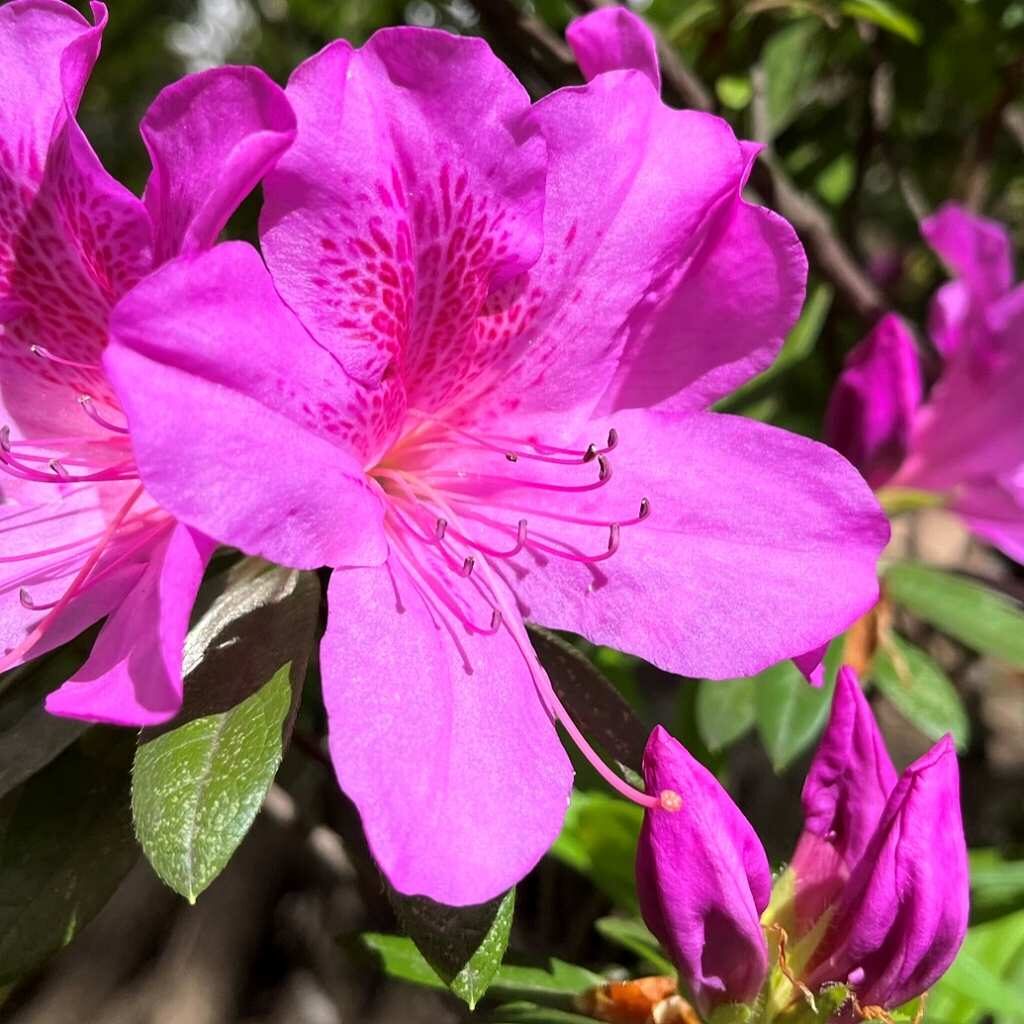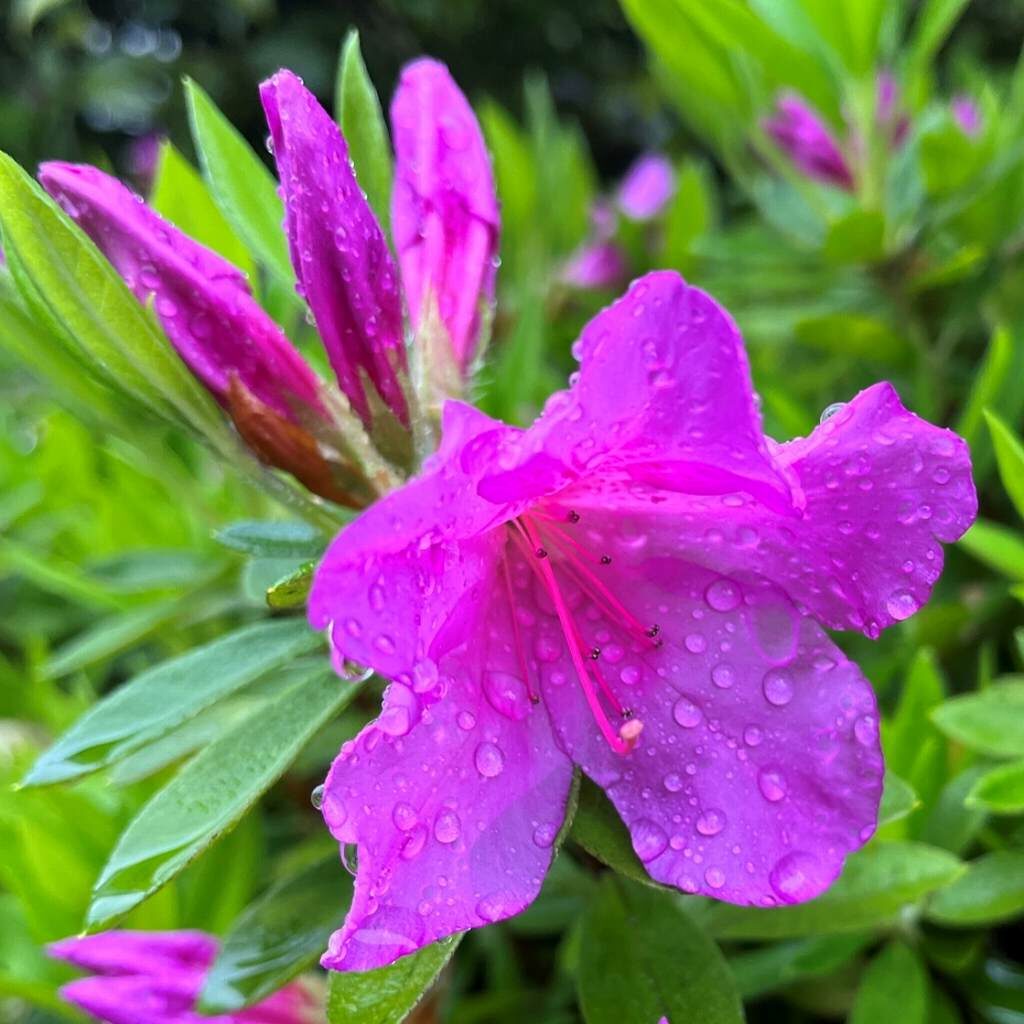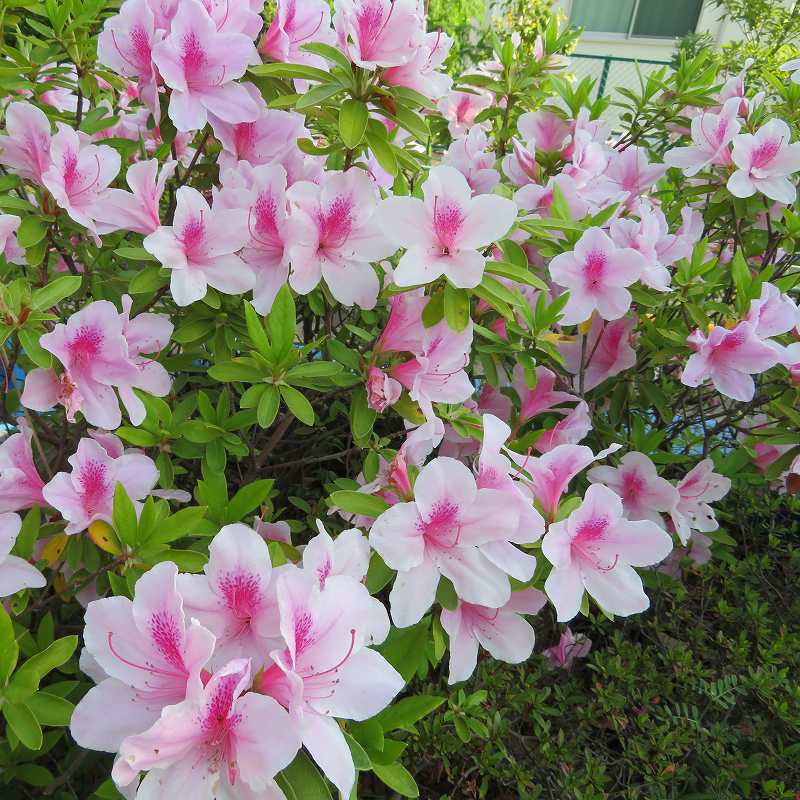ツツジの花は漏斗状で、先端が5裂の合弁花。花弁の内側に「蜜標」と呼ばれる斑点模様があり、花粉媒介昆虫に蜜腺があることを伝えます。
The Azalea flower is funnel-shaped and is a sympetalae with five fissures at the tip. There is a speckled pattern on the inside of the petals called the “nectar guide”, which tells the pollinator insects that they have nectaries.
【仮名】ツツジ
【和名】躑躅, 映山紅
【英名】Azalea
【学名】Rhododendron
【誕生】05/ 07, 06/ 07
【開花】04, 05月
【花色】White, Pink, Red, Purple






ツツジ
ツツジの生態
ツツジはツツジ科ツツジ属。花は漏斗状で、先端が5裂の合弁花です。東アジアに90種ほど分布し、日本にはヤマツツジ、キシツツジ、モチツツジなど17種が自生。江戸時代から明治・大正期にかけて、それらの自生種を育種親に、クルメツツジなど多くの園芸品種が作出されました。
ツツジの区別
ツツジ属のうち、ツツジは葉や花が大きめで、4月頃に開花。「サツキ」(皐月)は葉が小さく硬く、5月頃に花を咲かせます。「シャクナゲ」(石楠花)は葉に光沢があり、花が枝先にまとまって咲く手毬状。「アザレア」(西洋躑躅)は花色が豊富で八重咲きもあって華やかです。
ツツジの名前
ツツジの名前の由来は、花が「筒」のようだから。または、花が連なって咲くことから「続き」が転じたともいわれます。和名の「躑」と「躅」は、どちらも「立ち止まる」「佇む」という意味。つまり、「花を見かけた人が立ち止まり、しばらく佇むくらい美しい」ということです。
ツツジの模様
ツツジの花は上1枚の花弁の内側に「蜜標(ガイドマーク)」と呼ばれる斑点模様があります。これは昆虫に蜜腺があることを伝え、花粉を運んでもらうため。実際、模様のある花弁のみ下に蜜があります。蜜標で受粉しやすいよう雄しべも配置。雌しべも柱頭が蜜標に向いています。
ツツジの毒性
ツツジは花の奥の方に甘い蜜があります。庭木や街路樹など、ごく身近な花でもあるので、子どもの頃にその花蜜を吸って遊んだ人も少なくないはず。しかし、その花蜜には毒性のある成分「グラヤノトキシン」が含まれるため、摂取が多いと嘔吐、痙攣、下痢などを引き起こします。
ツツジの表象
ツツジは俳句で春の季語。和歌では枕詞に用いられ、「にほふ」にかかり、「花のように美しい」という意味です。また、色の形容にも用いられ、「躑躅燃ゆ」は鮮やかな赤紫色。甘美な蜜と危うい毒を併せ持つせいか、花言葉は「初恋」「恋の喜び」とともに「節度」「慎み」です。
Azalea
Azalea belongs to the genus Azalea of ??the family Ericaceae. The flower is funnel-shaped and is a sympetalae with five fissures at the tip. About 90 species are distributed in East Asia, and 17 species such as Yama tsutsuji, Kishi tsutsuji, and Mochi tsutsuji grow naturally in Japan. From the Edo period to the Meiji and Taisho eras, many horticultural varieties such as Kurume tsutsuji were produced using these native species as breeding parents.
Of the genus Azalea, azaleas have large leaves and flowers and bloom around April. “Satsuki” has small and hard leaves and blooms around May. “Shakunage” has shiny leaves, and the flowers are in the shape of a Temari that blooms together at the tip of the branch. “Azalea” is gorgeous with abundant flower colors and double-flowered flowers.
The name of the Tsutsuji: azalea comes from the fact that the flowers are like “Tsutsu: tubes”. Or, it is said that the “Tsuzuki: continuation” has changed because the flowers bloom in a row. The Japanese name character both mean “stop” and “stand”. In other words, “the person who sees the flower stops and is so beautiful that it stands for a while.”
The azalea flowers have a speckled pattern called “nectar guide” on the inside of the upper petal. This is to tell the insects that they have nectaries and have them carry pollen. In fact, only the patterned petals have nectar underneath. Stamens are also placed so that pollination is easy with the nectar guide. The stigma of the pistil also faces the nectar guide.
The azalea has sweet nectar in the back of the flower. It is a very familiar flower such as garden trees and roadside trees, so there are many people who smoked and played with the nectar when they were children. However, since the nectar contains a toxic component, “grayanotoxin,” high intakes can cause vomiting, convulsions, and diarrhea.
Azalea is a haiku and spring season word. In Japanese poems, it is used as a makurakotoba and means “nihofu”, which means “beautiful like a flower”. It is also used to describe the color, and “Azalea Burning Yu” is a bright reddish purple. Perhaps because it has both sweet honey and dangerous poison, the flower language is “moderation” and “modesty” along with “first love” and “joy of love”.


